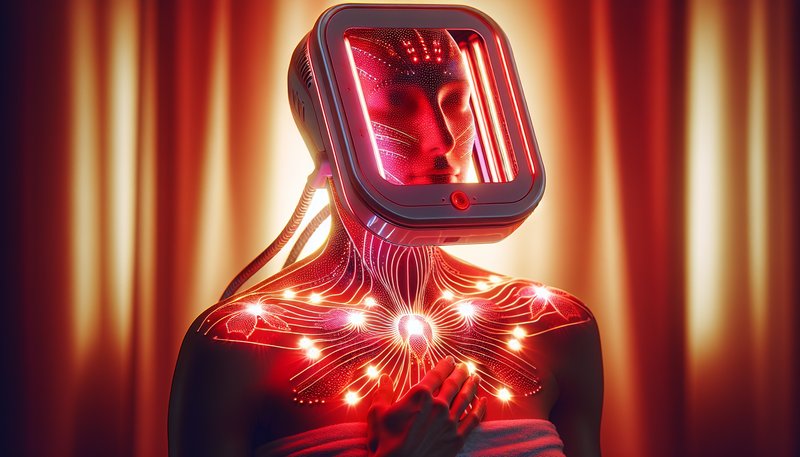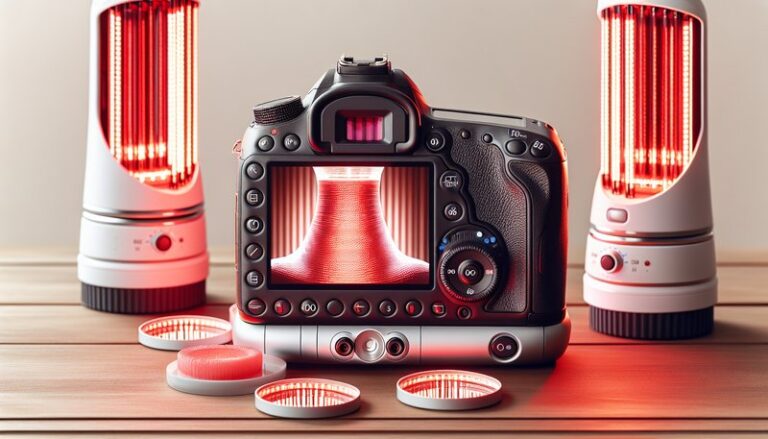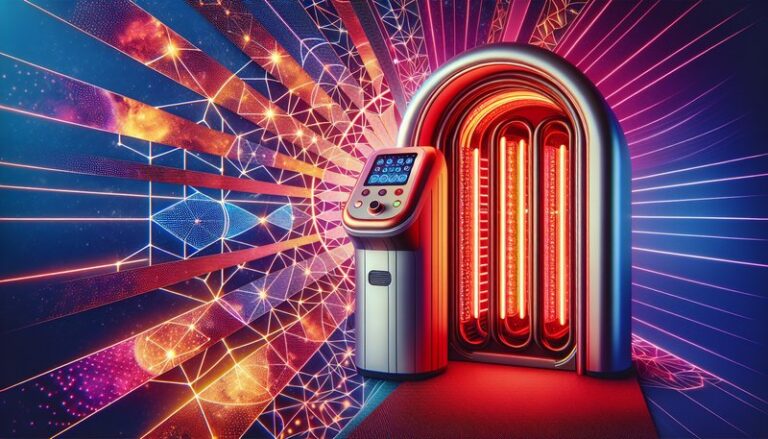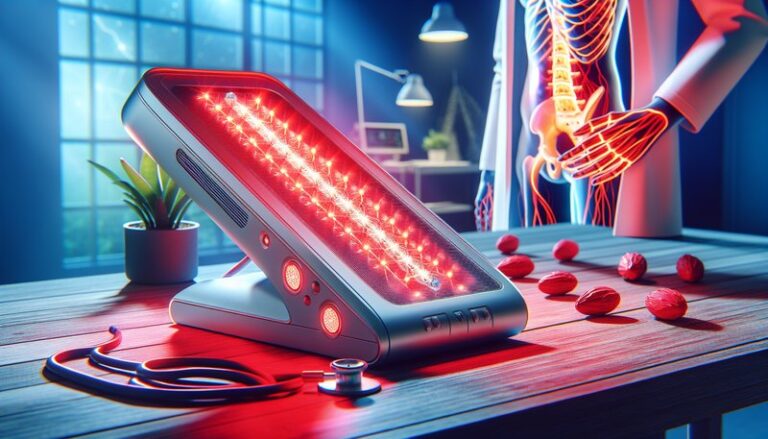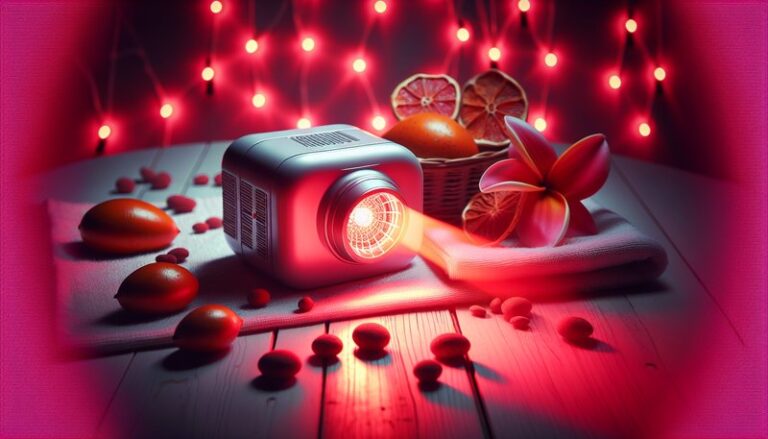What Is Led Red Light Therapy?
Are you looking for a non-invasive and effective way to enhance skin health, relieve pain, or boost recovery?
LED red light therapy might be the solution you’ve been searching for. This article will provide an in-depth look at what LED red light therapy is, the benefits it offers, considerations before using it, and alternatives to explore.
Read the extensive guide Red Light Therapy Locations
Key Takeaways
- LED red light therapy uses specific wavelengths of light to promote healing and reduce inflammation.
- This therapy can benefit various conditions, including skin aging, inflammation, and muscle recovery.
- It is generally safe, but certain precautions should be considered before use.
What is LED Red Light Therapy?
LED red light therapy is a treatment that involves the use of low-level wavelengths of red light and near-infrared light. This therapy has gained popularity in both clinical and home settings due to its potential therapeutic benefits.
Historically, light therapy has been studied for decades, but it has gained traction as technology has advanced. The unique properties of red light, specifically in the wavelength range of 600 to 650 nanometers, are believed to penetrate the skin and stimulate cellular processes.
Within this spectrum, LED devices emit photons that can be absorbed by cells, promoting increased energy production, reduced inflammation, and enhanced tissue repair. This mechanism is why red light therapy has found applications in skincare, physical therapy, and pain management.
What are the Benefits of LED Red Light Therapy?
LED red light therapy offers a myriad of benefits that are increasingly being recognized in both scientific research and clinical practice. The following sections will highlight some of the most notable advantages.
Skin Rejuvenation
One of the primary benefits of LED red light therapy is its ability to improve skin health. Studies suggest that it can help reduce the appearance of wrinkles and fine lines, improve skin texture, and enhance overall glow.
Check out the latest Red Light Therapy Effects
The therapy stimulates collagen production, which is essential for maintaining skin elasticity and reducing signs of aging.
Pain Relief and Inflammation Reduction
Another significant benefit is its role in alleviating pain and reducing inflammation. This can be particularly beneficial for individuals suffering from chronic pain conditions, arthritis, or muscle soreness.
By promoting circulation and cellular repair, red light therapy can help speed up recovery from injuries and enhance physical performance in athletes.
Wound Healing
LED red light therapy has been shown to enhance the healing process for wounds and scars. This effect is attributed to improved blood flow and increased production of collagen and elastin, which are vital for tissue repair.
This therapy is often utilized in clinical settings for postoperative care, helping to reduce the risk of infection and improve recovery times.
Mood Enhancement and Sleep Improvement
Some studies indicate that red light therapy may positively affect mood and sleep patterns. By helping to regulate the body’s natural circadian rhythms and reducing stress, users may find relief from anxiety and improved sleep quality.
Is it Possible to Use LED Red Light Therapy at Home?
Yes, using LED red light therapy at home has become increasingly accessible due to the availability of various devices designed for personal use.
What are the Advantages of Home Use?
Convenience and cost-effectiveness are the primary advantages of using LED red light therapy at home. Consumers can easily integrate it into their daily routines without the time constraints of visiting a clinic.
Additionally, home devices can be tailored to individual needs, allowing users to target specific areas effectively.
What are the Disadvantages of Home Use?
While safe, home devices may have limitations compared to clinical-grade options. Home units can have lower power and fewer settings, which may limit effectiveness for certain conditions.
It’s also important to note that improper use, such as duration or distance from the skin, can diminish the intended benefits.
What are the Things to Consider Before Using LED Red Light Therapy?
Before beginning LED red light therapy, there are several important factors to consider to ensure proper usage and safety.
Consult with a Healthcare Professional
It’s advisable to consult with a healthcare provider before starting any new therapy, especially if you have underlying medical conditions or are taking medications that may affect your skin sensitivity.
Device Quality and Specifications
Investing in a high-quality device is crucial. Look for options that specify the wavelength of the light used, as some devices may not deliver the appropriate range necessary for effective treatment.
Treatment Consistency
Consistency is key to achieving the desired results with LED red light therapy. Regular sessions might be necessary for chronic conditions, while less frequent use may suffice for maintenance.
Monitor Your Skin’s Response
Pay attention to how your skin responds during and after treatment. If you notice any irritation, discomfort, or adverse effects, adjust your usage or consult a healthcare professional.
What are the Alternatives to LED Red Light Therapy?
If LED red light therapy does not seem like the right fit, several alternative therapies may provide similar benefits.
Infrared Therapy
Infrared therapy uses longer wavelengths of light to penetrate deeper into tissues. It is often used for pain relief and muscle recovery, providing a similar effect to red light therapy.
Cold Laser Therapy
Cold laser therapy employs low-level lasers to stimulate healing and pain relief. It is commonly used in clinical settings for conditions such as tendonitis and arthritis.
Microdermabrasion
Microdermabrasion is a skincare treatment that exfoliates the skin to improve texture, reduce fine lines, and promote collagen production. While not light-based, it offers benefits for skin rejuvenation.
Chemical Peels
Chemical peels involve applying a solution to the skin to exfoliate and reveal smoother, more youthful skin underneath. This alternative focuses on skin health but may not provide the same deep tissue benefits.
Conclusion: Is it Recommended to Use LED Red Light Therapy?
LED red light therapy presents numerous benefits for skin rejuvenation, pain relief, and overall health enhancement. While it is generally safe and effective, individuals should consider their specific needs, devices available, and any potential contraindications.
By consulting a healthcare professional and using a high-quality device, most users can safely benefit from this innovative therapy.
Frequently Asked Questions
What skin types can benefit from LED red light therapy?
LED red light therapy is suitable for various skin types, from oily to dry and sensitive. However, individuals with specific skin conditions should consult a dermatologist before starting therapy.
How often should I use LED red light therapy for maximum benefits?
For optimal results, many experts recommend using LED red light therapy 3-5 times a week, with each session lasting 10-20 minutes. Consistency is key.
Can LED red light therapy cause any side effects?
Most users experience no side effects; however, some may notice minor redness or sensitivity after treatment. These effects typically dissipate shortly after use.
Is LED red light therapy safe for all ages?
LED red light therapy is considered safe for most individuals, including children and the elderly. Nonetheless, it’s essential to consult a healthcare provider for tailored advice, especially for children.
Can I combine LED red light therapy with other treatments?
Yes, LED red light therapy can often be combined with other treatments, such as skincare regimens and clinical procedures. However, it’s best to communicate with your healthcare provider to ensure compatibility.
